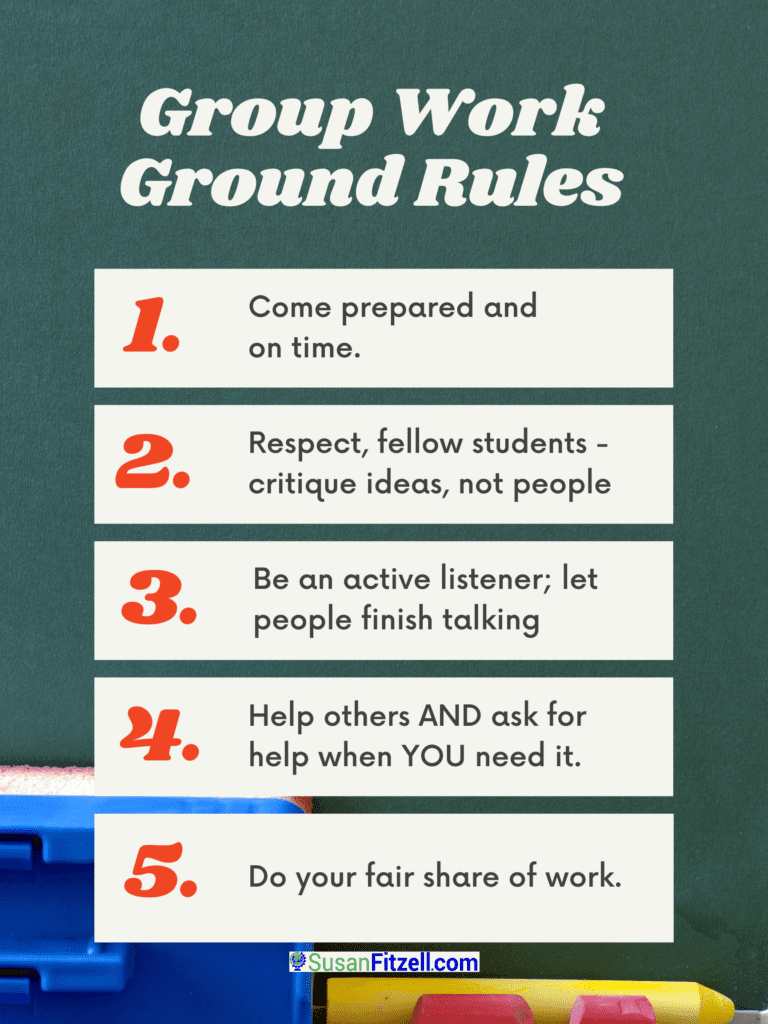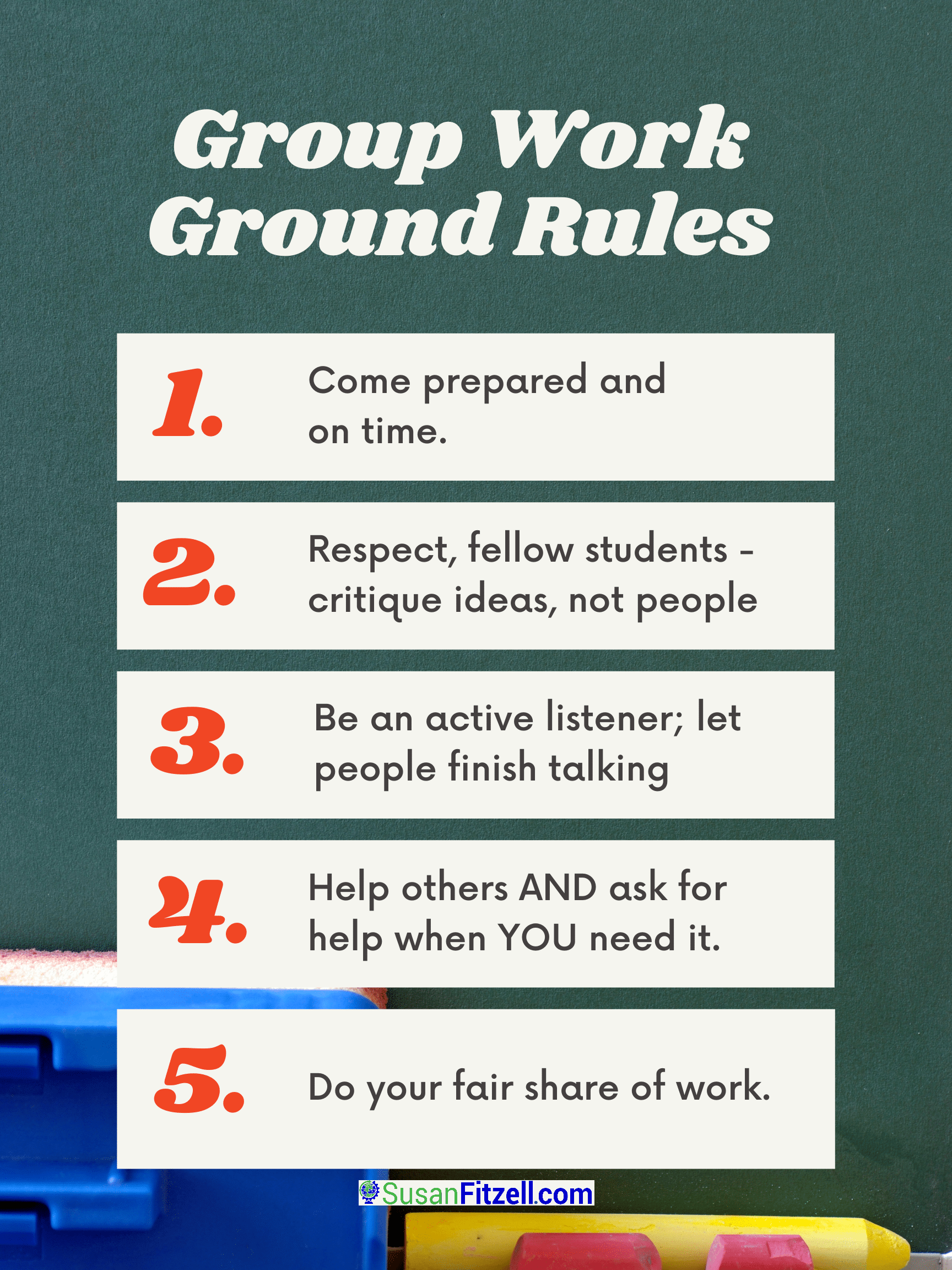Group process defined
Although cooperative learning is a research based practice, it’s gaining revived attention in states implementing Common Core State Standards. Cooperative learning is necessary for teachers to set the stage for students to “dig deeper” and engage in more critical thinking skills.
Often, teachers have concerns about cooperative learning because students might get off task or worse cause trouble. I understand the concern and know first hand how difficult it can be for some groups to work well together.

In order for students to behave appropriately and stay on task during small group work, they have to be taught how to work in a group. Students have been trained over the years to sit at desks, lined up in rows, and passively receive information. Many, if not most, students have no idea how to work in a group. If they have experience with group work it might be quite limited because schools still teach primarily through a direct teaching, whole class model. So, when students are suddenly asked to work in a group they often misbehave and mismanage their time. They simply don’t know how to do small group work.
Consequently, teachers need to teach students how to work in a group. The first step in the process is to establish ground rules and norms for interaction. These guidelines must be enforced by teachers, and students, in order for group work to be effective. Ground rules should encourage positive collaborative behaviors among all students.

In my experience, students abide by rules best when they have a part in making them. Guidelines / ground rules need to be posted in the classroom so students can readily refer to them. If students or teachers believe that additional rules are needed they can be added later.
A very effective technique for teaching students appropriate small group behavior is to have students take an active role in identifying what appropriate behavior actually looks like. It’s worth taking the time to do some role-play with your students to show the difference between an ineffective group and an effective group. Another very effective strategy is to have students give their input on inappropriate behavior. For example, putting other students in the group down or laughing at group members’ ideas. Students are more likely to comply if they have agreed with reasonable behavior and consequences.

Some suggested ground rules for working with groups:
- Start on time.
- Practice respect for yourself and others.
- Come prepared to do your part.
- Be a good listener.
- No put-downs.
- Make sure everyone gets a chance to contribute or speak.
- Accept constructive criticism gracefully.
- Critique ideas, not people.
- Stay on task.
- No interruptions; let people finish talking.
- Ask for help when you’re confused about what to do.
- Help others when you can.
- Do your fair share of the work.

Ways to establish teacher expectations for small-group work
- Describe, show an example, or model the expectations for assignments and activities.
- Provide models and examples of what the outcome should, and should not, look like.
- Rehearse expectations.
- Notice positive group behavior.
- Correct misbehavior and teach appropriate behavior and expectations. We cannot assume that students know what to do.
- Review expectations frequently.
- Tips for introducing the group activity
- Arrange tasks so that all students are within the teacher’s view.
- Be thorough when explaining instructions and giving directions.
- Make sure students understand what they are going to do and why they are going to do it.
- Be clear in stating teacher expectations.
- Establish time limits and provide checkpoints within those time limits. For example, if students are going to work in small groups for 15 minutes, check in with students as a whole class to make sure they are on track every three to four minutes.
- Describe and model the final product.
- Monitor small groups and provide guidance as needed.
Ideas for developing a class plan for differentiating within groups
- Decide on a physical classroom desk and table arrangement.
- Will one room arrangement work or will teachers need to have options for multiple arrangements depending on the group activity required?
- How will the class be rearranged when necessary? What will be required to accomplish rearranging the classroom?
- What routines and skills are necessary for students to learn to have the class run smoothly when we deviate from the traditional row arrangement? Have students practice moving from one room arrangement to another.
- Use a signal, either a hand gesture or a sound, to notify students of time remaining until a transition, then use the signal again when the transition needs to occur. Before any transition, remind students of behavioral expectations.
The goal in designing the classroom to be conducive to small group work is to design a structure that allows the teacher or co-teachers to interact quickly and easily with all students.
Co-teaching and Effective Group Process
Are you trying to use the Co-teaching Station Teaching Model? Or, are you using one of Susan Fitzell’s two dozen co-teaching implementations from The HOW of Co-teaching®? There’s some useful tips in these articles:
- The HOW of Co-teaching – Two Support Student Participation and Engagement
- Co-teaching models: Chunking Lessons with Station Teaching
- Co-teaching Models: Effective Strategies for Implementing Flexible Grouping in Your Classroom

What ground rules do you use in your classroom? Are there any strategies or techniques for transitioning that you’ve found work well? What are they? What challenges to group activities in your classroom do you still struggle with?
For more information on differentiation and Response to Intervention, see Susan Fitzell’s book, RTI Strategies for Secondary Teachers.
Bring Susan to your campus!
Featured seminar – Response to Intervention (RTI) Strategies


